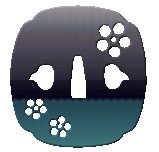
Many internet sites sell “real” Japanese swords: those made in Japan by traditional methods (the only way swords can legally be made in Japan). But too many sites that claim to have real Japanese swords are actually selling Chinese or other reproductions.
Fake swords may be good for training, but real Japanese swords carry the history and culture of Japan and would never be imported to, sold, or papered/recognized by the Japanese sword societies such as the NBTHK.
Our collection is exclusively authentic.
Prices will reflect this and while there are some pieces that we consider “less expensive”, most are a considerable investment.
Browse our collection, reach out to us, or make an offer on one of our handcrafted, original Japanese masterpieces.

The Fujishima school worked in Echizen and Kaga provinces from the Jōwa (1345-50) through Eishō (1504-21) periods and included several generations of the famous smiths, Tomoshige, Yukimitsu, Kiyomitsu, Chikanori, and Nobunaga.
Seishinshi Nagatoshi, Seishinshi Nagatoshi Saku (kao). Nagatoshi’s original name was Kojima Tamekazu 小島為一. started making swords in Showa 8 and focused on the Bizen tradition especially the style of Osafune Nagamitsu 長船長光. Nioi based choji hamon with long ashi and well-forged mokume hada with frosty ji-nie are the main characteristics of his work.
This piece he made with his son Sadatoshi (also a swordsmith) and they both signed.

